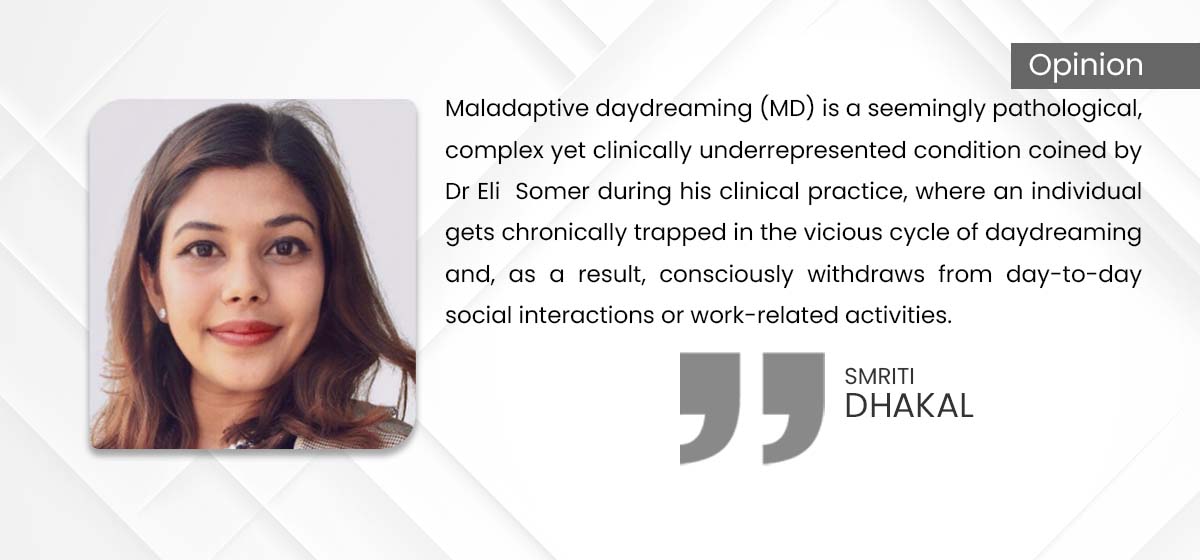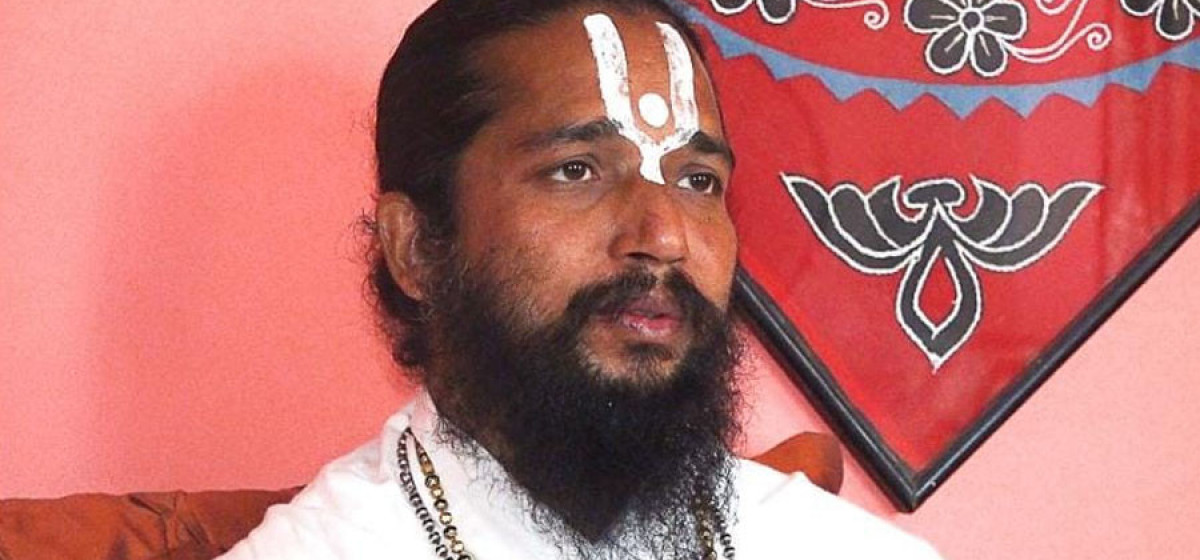
OR

More from Author
Maladaptive daydreaming (MD) is a seemingly pathological, complex yet clinically underrepresented condition coined by Dr Eli Somer during his clinical practice, where an individual gets chronically trapped in the vicious cycle of daydreaming and, as a result, consciously withdraws from day-to-day social interactions or work-related activities.
How many of us have been so caught up in the vicious cycle of day-dreaming that we put a halt on crucial work?
Chances are innumerable, right?
How about spending countless hours in headspace by merely doing anything besides fantasizing?
Exhilarating yet distressing, isn’t it?
If you find the sentiment shared above doing a fair share of justice to describe your day-to-day schedule, on top of that, feel guilty as charged for wasting your precious time by needlessly participating in such a detrimental pattern — most likely, you may have something called maladaptive daydreaming.
Maladaptive daydreaming (MD) is a seemingly pathological, complex yet clinically underrepresented condition coined by Dr Eli Somer during his clinical practice, where an individual gets chronically trapped in the vicious cycle of daydreaming and, as a result, consciously withdraws from day-to-day social interactions or work-related activities.
However, the bottom line is these fleeting fantasies tend to be so intangibly vivid, incredibly fanciful and evocative that they almost cast a momentary spell of illusion on individual lives, causing them to get fully immersed in the world full of stories. Unlike occasional daydreaming, it tends to be intense with a complex narrative and storyline.
Although this series of aberrant yet persistent cycle may liberate one from a tedious, obsolete and mundane schedule, it may, contrarily, invite counterproductive effects in life. Likewise, the most common side effect of this disorder is procrastination. Constantly drowning in a sea of thoughts will inevitably take away a large sum of time, causing one to delay the regular execution process by impeding one’s ability to carry out daily tasks, leading to low performance and failure.
During the current period of global uncertainty, where people are reluctantly obliged to implement prohibitory orders and are requested to stay home, it is utmost certain to claim that mental health issues like this have flared up amid the COVID-19 crisis. As people are so confined within the pillars of closed spaces with little to mere activity, limited mobility, it is rather undeniable to adapt this disorder as a strategy to cope with boredom or loneliness. Reports have closely linked cognitive functions with proper sleep hygiene.
So the next synonymous effect of this relentless pattern is a poor sleep cycle and, as a consequence, a common sleep disorder — insomnia. That said, it acts as a detrimental distraction and obliterates the overall circadian cycle.
Many researchers claim this fantastical condition — day-dreaming — as a product of DEFAULT MODE NETWORK (a set of network heavily implicated for generating involuntary response). Anatomically, the DEFAULT MODE network, or “autopilot mode” is a prominent system in the brain significantly responsible for generating unpremeditated response in the state of rest.
Oftentimes, real life events trigger this condition - particularly in those with a severe history of trauma, stress and other behavioral disorders. For individuals with this condition, it works as a conduit — a portal to escape from the harsh cycle of reality.
However, it is yet to be recognized as a diagnosis in the Diagnostic and Statistical Manual of Mental Disorders 5, (DSM-V). In recent years, there are handful of theories proposed and compiled for determining its root cause and severity in depth. Amongst them, one finding shows a potential morbidity of MD with other underlying psychiatric conditions such as PTSD, OCD and other behavior-related disorders. In fact, it has been constantly regarded as a form of coping mechanism —a complex narrative designed by the brain to cope with unbearable pain caused by trauma.
However, recently, a research conducted on MD disdains its scientific correlation with any form of behavior addiction, and instead, claims it as an indicator of creativity. Despite its benignly intrusive tendencies, it is reflected beyond the mirror of detrimental distraction, and is likely considered as the most common factor for stirring up an element of imagination through which one effortlessly taps into the realms of creativity - whether it is creative writing or storytelling.
You May Like This

Demystifying labeled Feminism
The term "feminist" often evokes a range of reactions varying from admiration to disdain. People who believe in equality for... Read More...

Nepal Investment Summit 2024 and Victor Hugo Moments for Reforms
As Nepal Investment Summit is taking place in Kathmandu after a five-year gap on 28-29 April, the CEO of Investment... Read More...

The South Korean Development Formula
The Nepal Investment Summit 2024 is beginning today. I am confident that the two-day summit will play an important role... Read More...




Just In
- Nepal and Vietnam could collaborate in promotion of agriculture and tourism business: DPM Shrestha
- Govt urges entrepreneurs to invest in IT sector to reap maximum benefits
- Chinese company Xiamen investing Rs 3 billion in assembling plant of electric vehicles in Nepal
- NEPSE inches up 0.07 points, while daily turnover inclines to Rs 2.95 billion
- Gandaki Province reports cases of forest fire at 467 locations
- Home ministry introduces online pass system to enter Singha Durbar
- MoLESS launches ‘Shramadhan Call Center’ to promptly address labor and employment issues
- Biratnagar High Court orders Krishna Das Giri to appear before court within one month in disciple rape case















Leave A Comment